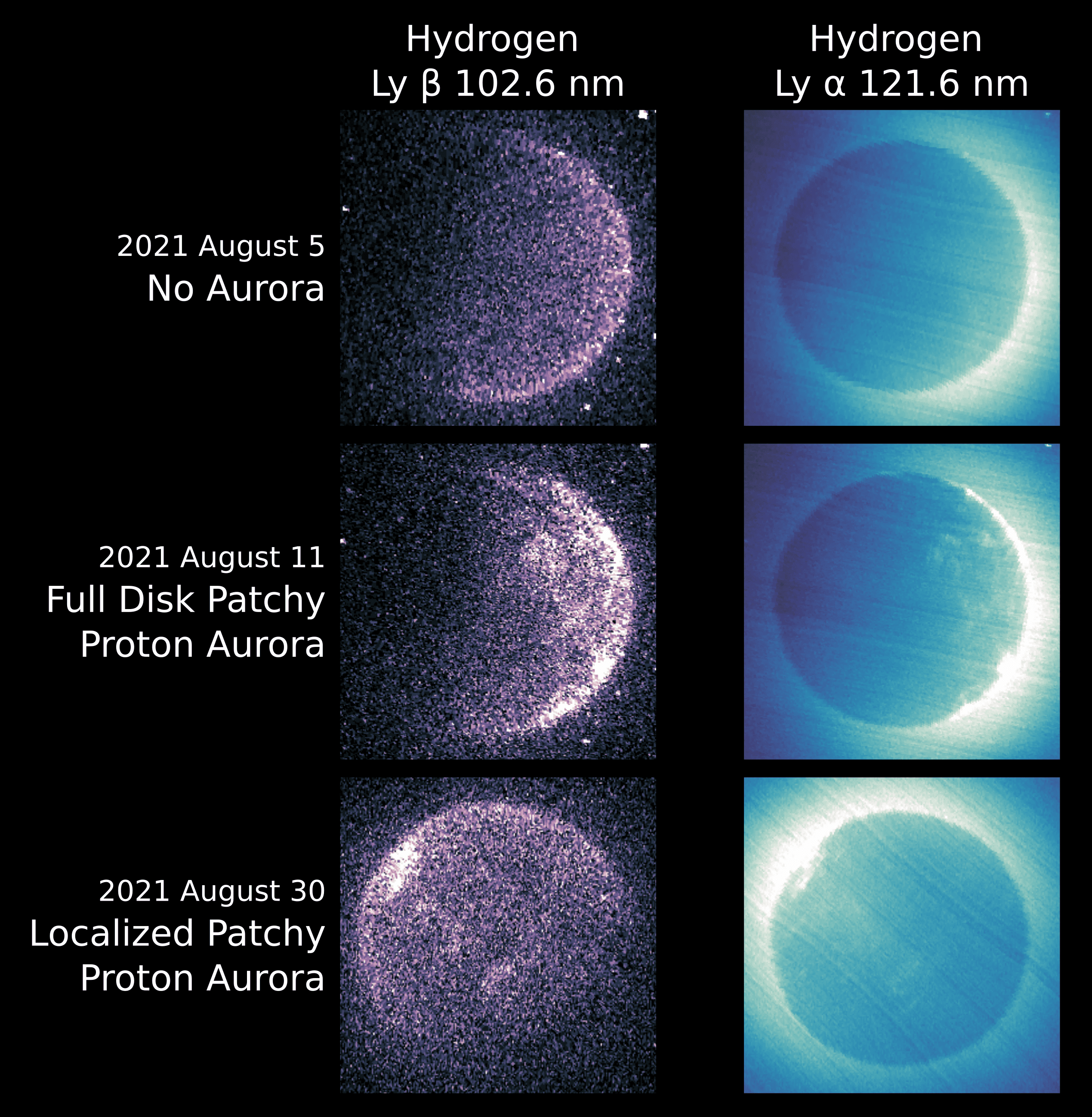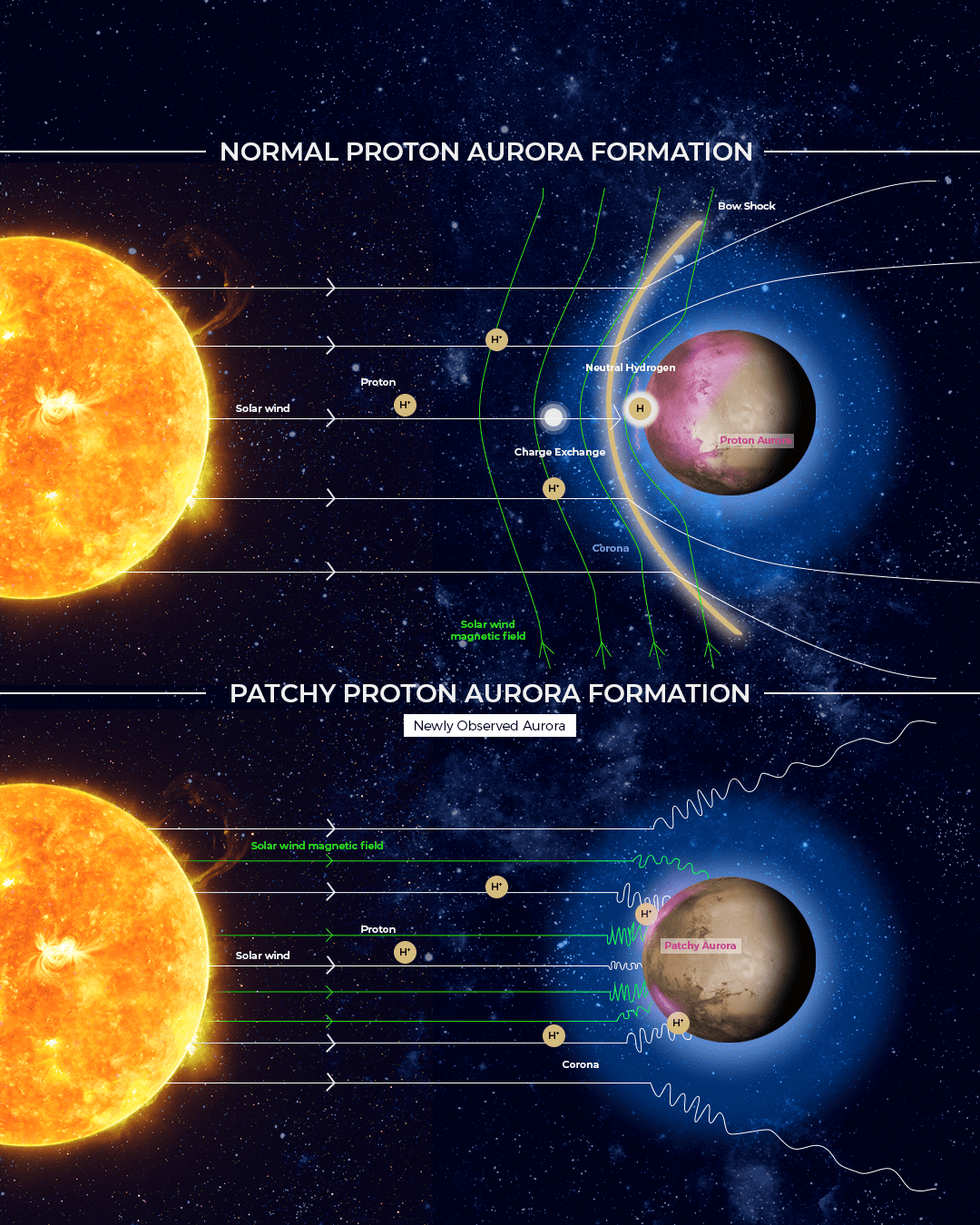Mars doesn’t have a magnetic field like Earth so its aurorae are quite unique. They are known as proton aurorae and they are caused by the protons in the solar wind stealing electrons in the bowshock region of the planet and penetrating deeper, releasing ultraviolet light as they slow down. Now, researchers have discovered that Mars has a second type of proton aurora.
This is known as “patchy proton aurora”. While the smooth version appears to be evenly distributed across the hemisphere, the patchy aurora is more chaotic and shows more variability with localized aurora and versions spreading across the side of the planet facing the Sun. The findings are reported in Geophysical Research Letters.
Observations from the United Arab Emirates’ Emirates Mars Mission (EMM) together with NASA’s MAVEN (Mars Atmosphere and Volatile Evolution) mission, were key to providing insights into how these events happen. It is usually difficult for the solar wind to reach the Martian upper atmosphere so for these rare events to happen, the space weather surrounding Mars needs to be chaotic.

Patchy proton aurora at different times last August. Image Credits: EMM/EMUS
“EMM’s observations suggested that the aurora was so widespread and disorganized that the plasma environment around Mars must have been truly disturbed, to the point that the solar wind was directly impacting the upper atmosphere wherever we observed auroral emission,” lead author Mike Chaffin, from the University of Colorado Boulder, said in a statement. “By combining EMM auroral observations with MAVEN measurements of the auroral plasma environment, we can confirm this hypothesis and determine that what we were seeing was essentially a map of where the solar wind was raining down onto the planet.”
The work shows how international collaboration between space agencies can enhance the findings of each individual mission.
“EMM’s global observations of the upper atmosphere provide a unique perspective on a region critical to MAVEN science,” said MAVEN Principal Investigator Shannon Curry, of UC Berkeley’s Space Sciences Laboratory. “These types of simultaneous observations probe the fundamental physics of atmospheric dynamics and evolution and highlight the benefits of international scientific collaboration.”
EMM Science Lead Hessa Al Matroushi agreed. “Access to MAVEN data has been essential for placing these new EMM observations into a wider context,” she said. “Together, we’re pushing the boundaries of our existing knowledge not only of Mars, but of planetary interactions with the solar wind.”

An infographic that shows the difference between regular proton aurora and patchy proton aurora. Image Credit: Emirates Mars Mission/UAE Space Agency
Source Link: New “Chaotic” And “Patchy” Mars Aurora Discovered By Astronomers